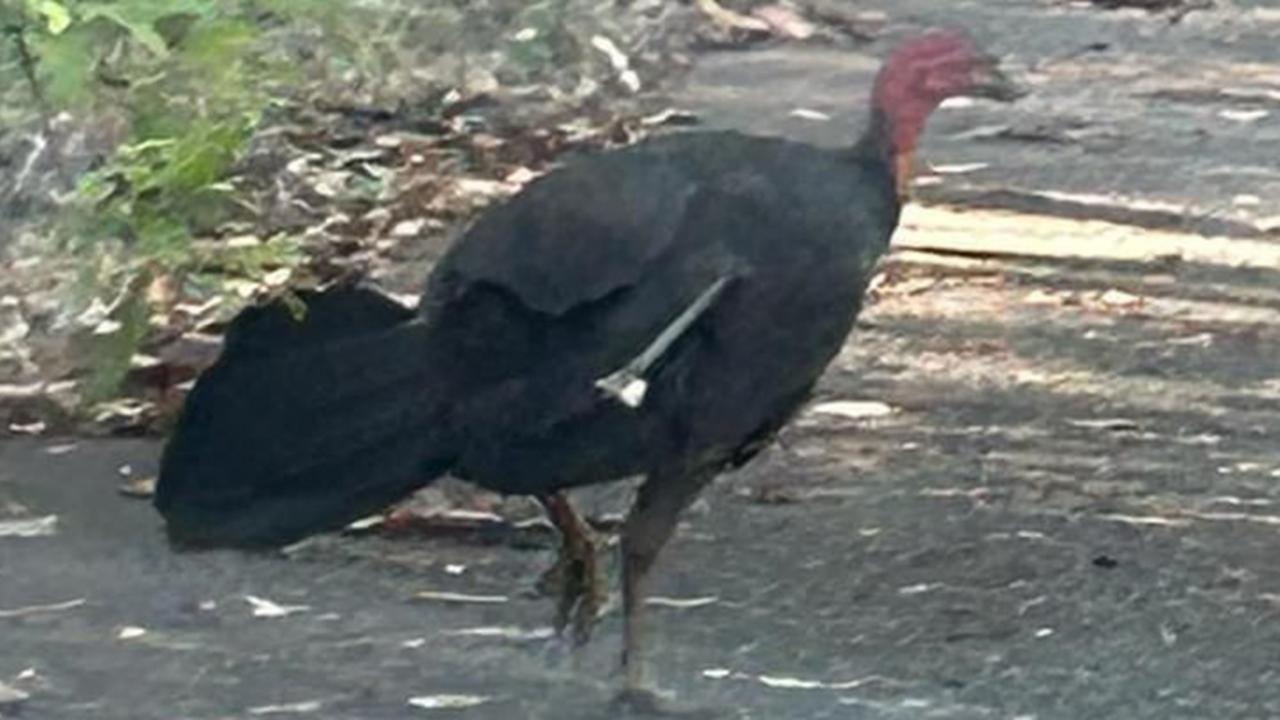Inside Animal Emergency Service Cararra clinic on the Gold Coast
Machines beep in the background, vets inspect their patients and nurses slip past to check on their sick or injured charges as yet another animal is brought in. This is what it’s like inside one of the Coast’s busiest animal emergency vet clinics.
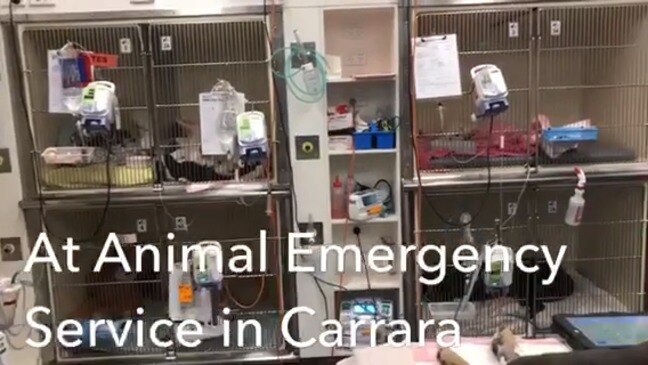
Pets & wildlife
Don't miss out on the headlines from Pets & wildlife. Followed categories will be added to My News.
On New Year’s Day I’m invited to see what one of the busiest days of the year looks like at the Animal Emergency Service clinic at Carrara.
Machines beep, vets inspect their patients and nurses slip past to check on their charges.
Animals wait expectantly and nervously to be let out or for the next round of treatment.
Here’s what it’s like behind the scenes.

THE BUSIEST DAY OF THE YEAR
As the fireworks announce the start of 2019, vets and nurses at one of the nation’s busiest emergency animal clinics brace for the onslaught that is New Year’s Day.
More than 50 animals were seen yesterday by a crew of six vets, nine nurses and two receptionists at the Animal Emergency Service clinic at Carrara.
It’s double the amount of staff compared to a ‘normal’ day and it happens every year as vets across the nation close for the public holiday.
On New Year’s Day the clinic always has a rush of stray animals thanks to the overnight fireworks. This year they had 15 turn up, most of which were picked up later that day by their worried owners.
Other pets will need more care after twisting their stomach, getting into fights, ingesting poisons or eating rocks overnight.

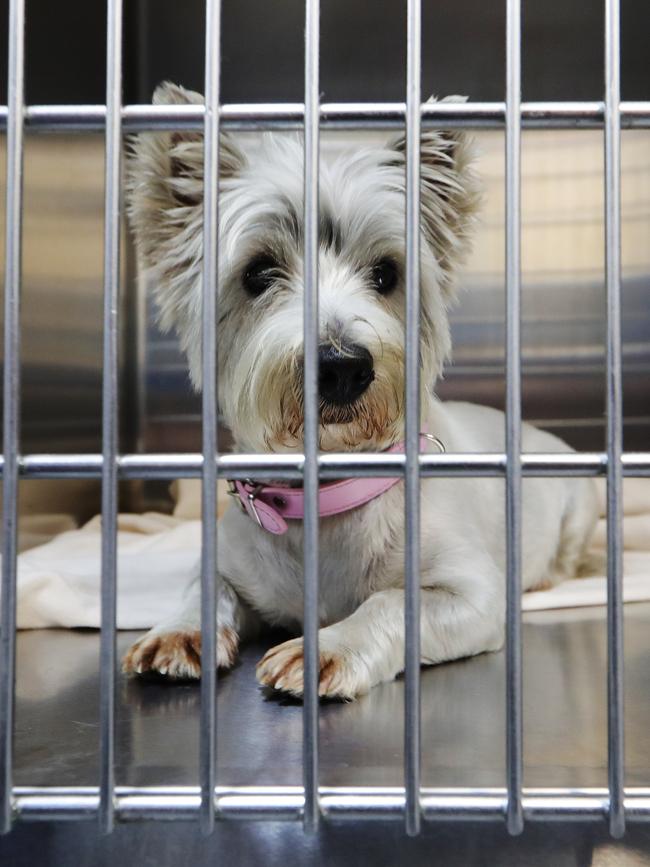
MEET THE PATIENTS
Hooked to a mechanical ventilator in the intensive care part of the ward, British bulldog Biggie Smalls is helped to breathe after suffering from aspiration (inhaling his own vomit) on Christmas Day.
The machine constantly beeps as nurses regularly check on his vitals.
He’s lucky to be alive as his devoted owners continue to pour everything they can into saving him, including starting a fundraiser. They also spent their entire savings on him.
Lying on the floor and constantly monitored by vet nurse Mikaila Carsburg is Angel the husky, who is believed to have eaten rat bait. It caused her to bleed profusely through her nose.

Hunkered down in a ward cage is Arnie the cattle dog, who decided to eat something he was not supposed to. Luckily, it’s not life threatening but it certainly didn’t agree with him.
A chihuahua in intensive care is quietly curled up in his dog bed having recently undergone a spinal tap. Vets believed he had meningitis. They were right.
OTHER NEWS:
Why teenager punched police officer in face
Too soon? Hot cross buns at Coast supermarkets
Landmark Surfers hotel in $70m sale
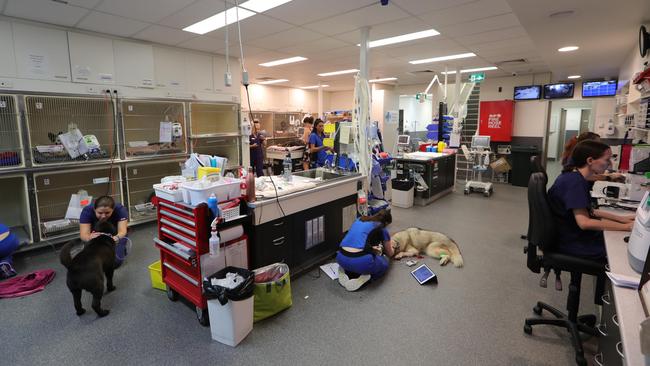
A schnauzer further down is also suspected of having meningitis. He was sent up from Ballina for specialist attention.
Boston the labrador, still under intensive care, has had enough of his confinement, trying to convince the nurses of his boundless energy.
Boston jumped off his human’s deck on Sunday, and landed on the edge of the pool. Unfortunately, he managed to rupture his bladder in the process and underwent emergency surgery that same night. He’s popped back into the cage despite his protests.
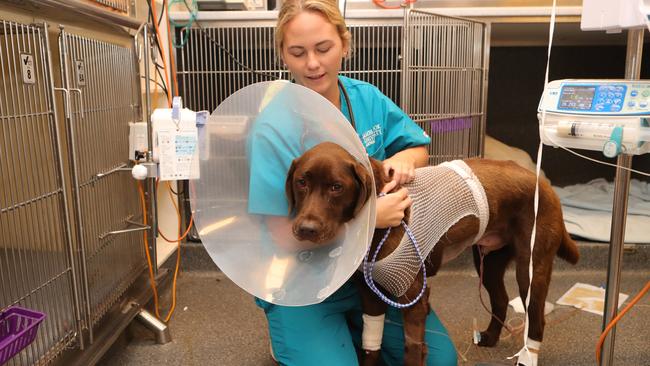
The ward is constantly buzzing with nurses and vets checking on patients as different machines continue to beep in the background.
A lorikeet brought in a cardboard box is inspected by Dr Anya Jackson, while Laura Hutchinson shows our photographer tame rats brought in after being found as strays.
There’s a few cats in a separate cat ward, but AES co-founder Dr Rob Webster says fewer felines are seen because they tend to get into less trouble then dogs.
Luckily, because the staff have seen some bizarre things, including a dog who ate a remote control, a fish brought in for surgery and a dog who ate an entire kebab stick which then perforated her stomach.
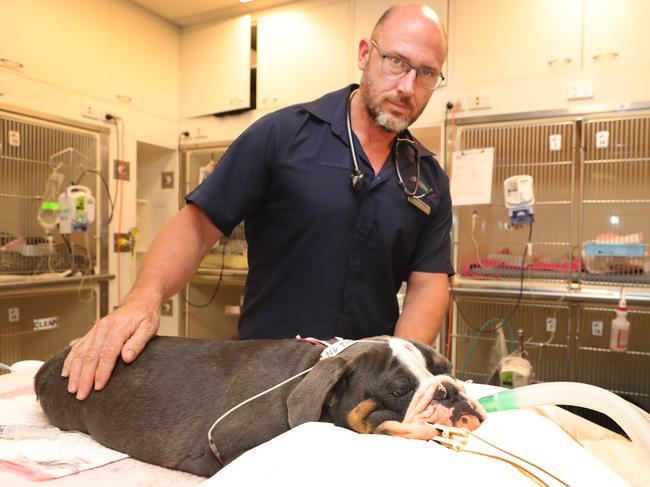
A CLINIC OF THE FUTURE
Dr Rob Webster has studied critical care for more than 15 years across his career as a vet.
He’s one of about five qualified critical care specialists in the country after an intensive amount of training, including five years of university, another five years as a member of Australian College of Veterinary Sciences, a three year residency of supervised training, the sitting of exams, publishing papers and teaching.
“To become a specialist takes at least at the bare minimum six years of training,” Dr Webster says.
Initially, Dr Webster thought he wanted to work with cows interstate, but one night in emergency care changed all that.
Now his vision is to lead the way into critical care.
“But we can’t do that if we’re not set up to deal with the worst emergencies and do what people need,” he says.

So AES is equipped to deal with nearly any situation that pops up.
AES has an ultrasound room, their own in-house lab, a pharmacy, a ‘crash’ bench, an endoscopy room, three theatre rooms, a CT scanner and a fridge full of fresh blood and plasma donations.
It also boasts six critical care ventilators from the US, the most of any vet surgery in Australia due to the high amount of tick paralysis and snake bites in south east Queensland.
“Because we’ve got so many patients … we can save their lives by using the mechanical ventilation,” he says.
“In the States they have great universities and great teaching, but nothing like the great number (of patients) that can benefit,” he says.
“If we weren’t able to ventilate little Biggie, he would have died.
“This is the only treatment modality that gives him a chance.”
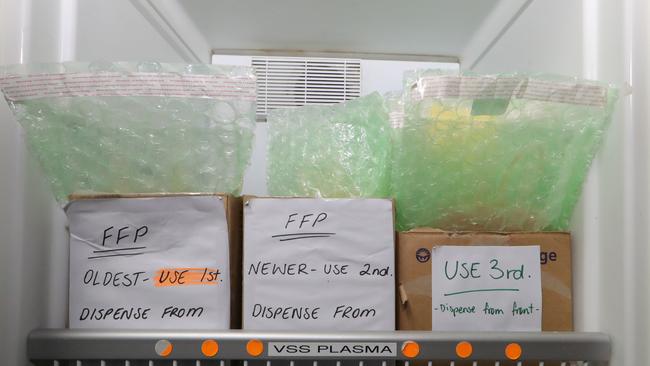
PETS ARE EXPENSIVE
A question often raised about vets — and certainly in emergency care — is why is it so expensive?
Dr Webster says the intensive treatment, medical equipment, overheads and staff labour costs a lot to maintain.
On a public holiday especially, there are double the amount of staff shifts to cater for a spike in patients and staff are also paid double time and a half.
In AES, there are three fully set-up theatres for vets to use to operate on eyes or conduct spinal surgery.
SUBSCRIBE TO THE GOLD COAST BULLETIN FOR JUST $5 A MONTH FOR THE FIRST THREE MONTHS
Dr Webster says they have this lifesaving machinery so that owners know vets are doing the best they possibly can for their pets.
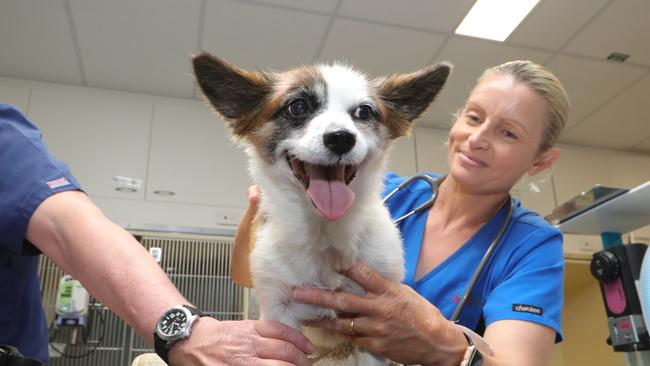
“With Biggie Smalls, 10 years ago a vet would have said to his owners, sorry, there’s nothing we can do, he’s going to pass away,” he says.
“Now we’ve got the ability to save his life. To be able to do that costs a lot. We do it as cheaply as we can.”
He said Biggie Small’s recent story meant a lot of people were questioning why pet owners would spend so much on their animals.
“How much should you pay for an animal’s life,” he muses.
“(One of the) concerns of the people that ask the question of cost: are (we) sitting here to gouge owners because no one else is open? That’s blatantly untrue.

“If we wanted to do that we wouldn’t have 15 people in the building doing the best we can. It does cost a huge amount to do what we do.
“Is it the right thing for people to choose?
“Well … why is it okay for someone to spend $100,000 on a car? If they want to do that, that’s their choice. If Biggie Smalls’ owners want to do everything they can (for him) … you can do what you want.”
Dr Webster says ultimately, there is no government subsidy for the care of animals.
Keeping a person alive on a ventilator costs tens of thousands of dollars each day, but this is covered by the health system so few see the true costs involved.
Owners of pets, unfortunately, must simply foot the bill.
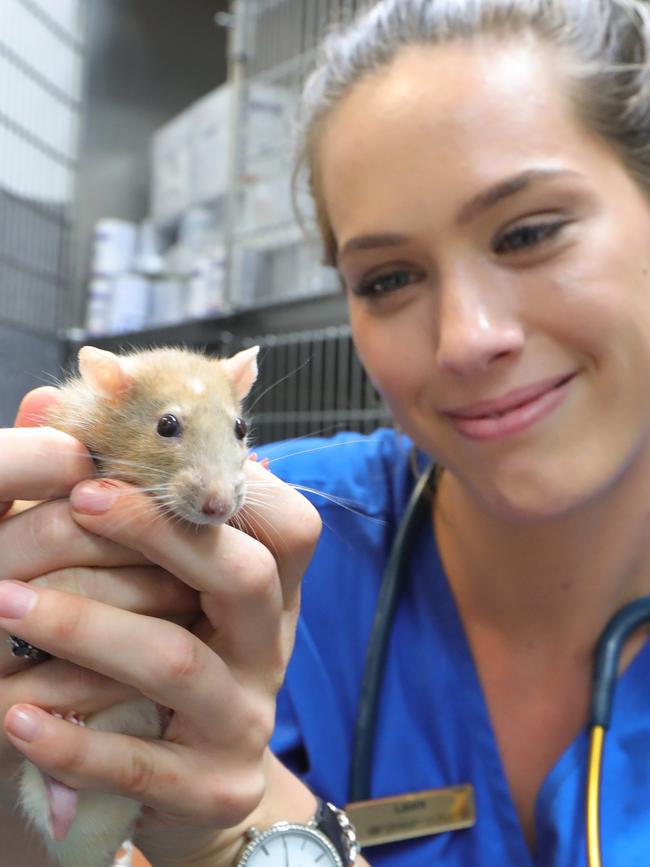
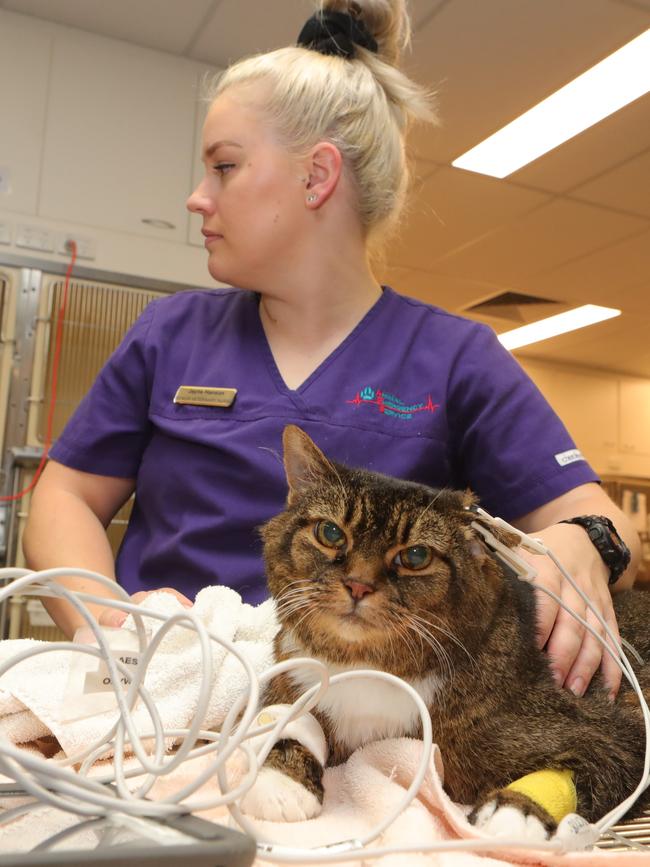
But Dr Webster hopes this all changes in the future.
In the meantime, he says the best ways to ensure your pet doesn’t need emergency care was to do two things: ensure your pet was protected against ticks and that dogs were kept on leash at all times, no matter how placid they are.
Some of the most common cases the clinic sees are wounds from a dogfight and upset stomachs.
WEIRDEST CASES THIS SILLY SEASON
1. A cat required surgery after eating one metre of Christmas tinsel
2. A little dog ate a kebab stick and perforated her stomach
3. A labrador ruptured his bladder after jumping off the deck and falling onto the edge of the pool
4. A labrador puppy ate a fish hook and had to have an endoscopy to remove it
WEIRDEST CASES OF ALL TIME
1. A dog came into the clinic after eating a whole TV remote control
2. Vets had to help free and treat a cat stuck in a sink during house renovations
3. Animals saved after being constricted by pythons
4. An owner brought a gourami fish in after it choked on a pebble. It survived surgery.
5. A Border Collie came in with a NERF bullet in his belly. Plastic doesn’t show up in X-rays, but the word on the invisible bullet did.

